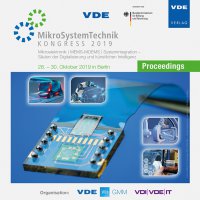Design of experiments (DoE) and FEM simulation for material selection in photonic assemblies with opposing packaging requirements
Conference: MikroSystemTechnik 2019 - Kongress
10/28/2019 - 10/30/2019 at Berlin, Deutschland
Proceedings: MikroSystemTechnik 2019
Pages: 4Language: englishTyp: PDF
Personal VDE Members are entitled to a 10% discount on this title
Authors:
Krochin Yepez, Pedro-Andrei (Department of Microsystems and Nanotechnologies (CR/ARY). Robert Bosch GmbH, 71272 Renningen, Germany & Institute for Micro Integration (IFM), University of Stuttgart, 70569 Stuttgart, Germany)
Scholz, Ulrike (Department of Microsystems and Nanotechnologies (CR/ARY). Robert Bosch GmbH, 71272 Renningen, Germany)
Zimmermann, Andre (Institute for Micro Integration (IFM), University of Stuttgart, 70569 Stuttgart, Germany & Hahn-Schickard, 70569 Stuttgart, Germany)
Abstract:
In the past decades, research in the field of photonics has rapidly increased. Different photonic applications have been extensively investigated and are about to be ready for commercialization. However, photonics packaging is still one major challenge preventing the commercial deployment of photonic systems. Compared to electronics packaging, photonic packaging poses additional challenges. It contains a number of competing requirements, for which compromises are necessary. For example, thermal management of photonic systems requires not only efficient heat dissipation, but also the reduction of temperature gradients. Certain material combinations that improve the heat dissipation increase the thermal cross-talk between components, resulting in temperature gradients in the photonic IC. Therefore, when selecting packaging materials, compromises between efficient heat dissipation and the reduction of temperature gradients must be made. This work uses a combination of Design of Experiments (DoE) and FEM simulations to analyze a large parameter space in a time and cost efficient manner. The optimal material combination is determined with FEM-DoE, so that targeted experiments can be carried out near this optimal working point. This reduces not only development costs, but also shortens decision times. In the FEM-DoE, each "experiment" refers to a simulation performed with a different set of input variables. The FEM-DoE results are then evaluated to derive a mathematical equation providing information about the influence of the different input factors on the output responses.


